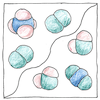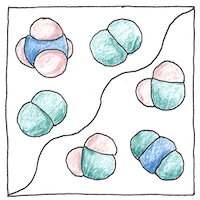Antoine Lavoisier
stoichiometry

|
Conservation of mass
The vacuum pump let scientists measure the weight of a gas that’s lighter than air which otherwise would lift, not weigh. Antoine Lavoisier showed water did not convert to earth by evaporation. He showed when phosphorus burned it gained in weight by combining with air. He thought that the additional weight after burning could be Joseph Black’s “fixed air,” that is, carbon dioxide. He and Joseph Priestley studied the gas from reducing the red calx of mercury which turned out to be oxygen. He worked with Pierre Simon Laplace to synthesize water from hydrogen and oxygen. Lavoisier carefully weighed reactants and products for each chemical reaction in sealed glass ampoules and found that the total mass was not changed.
Stoichiometry
Lavoisier changed the science of chemistry from being qualitative to being quantitative. Quantitative methods and an understanding of the conservation of mass led to John Dalton’s atomic theory, a better understanding of chemical reactions, and the discovery of new elements.
Nothing from nothing
Odysseus told Polyphemus the Cyclopes his name was “Nobody.” When the cyclopes asked whether Nobody was there, nobody answered. If nothing comes from nothing, then something must have been always there, hiding.



Lavoisier was not first to assume that mass is conserved in chemical reactions, but he established the general practice. Elements combine in measurable, whole-number proportions; for example, in water, there are two hydrogen for each oxygen.
See also in The book of science:
Readings in wikipedia: